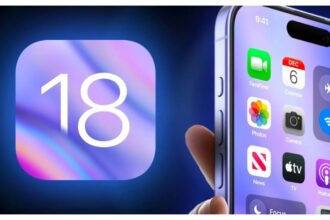Why Smart Watches Are So Much-Hyped Smartwatches offer a plethora of features that distinguish them from ordinary timepieces. These include but are not limited to activity tracking, notifications, health monitoring, GPS, voice assistants, and app integration. The convergence of these functionalities elevates smartwatches into intelligent companions, catering to various needs of users.
Regarding the future of smartwatches, they are poised to play a significant role in the technology landscape. As advancements continue, smartwatches are expected to evolve into even more sophisticated devices, potentially integrating augmented reality, biometric authentication, and enhanced health monitoring capabilities.
In today’s market, smartwatches come in a wide price range, catering to diverse consumer preferences and budgets. From budget-friendly options offered by Indian brands like Bot, Zebronics, Fire Bolt, and Noise, to premium offerings from established players like Fitbit, Samsung, Google, and Apple, there is a smartwatch for every need and budget.
The features available across this spectrum of smartwatches offer tangible benefits to users, contributing to their popularity and widespread adoption. These features not only serve as key marketing points for companies but also enhance the overall user experience, making smartwatches indispensable companions in the digital age.
Many smartwatches offer basic health-related features, but flagship models are renowned for their comprehensive health functionalities. Google recently unveiled its inaugural smartwatch, the Google Pixel Watch, signaling a paradigm shift in the role of smartwatches. Beyond mere health tracking, Google envisions smartwatches as sophisticated devices capable of contextual awareness. According to media reports, the Pixel Watch is designed to intuitively understand users’ location, activities, and emotional states, marking a significant leap in wearable technology’s potential to enhance user experience and well-being.
Google asserts that the level of understanding provided by the Pixel Watch surpasses even that of augmented reality glasses. The company acknowledges the increasing significance of smartwatches, paralleling the importance traditionally attributed to smartphones. David Singlett, former director of engineering at Android, characterizes smartwatches as potent computing devices compact enough to be comfortably worn throughout the day.
Remarkably, wearables are emerging as the foremost IoT (Internet of Things) tools due to users’ desire for seamless connectivity. Apple, a leader in the smartwatch market, capitalizes on this trend, maintaining its dominance through continuous innovation. However, as wearables evolve with additional features, the entire market is poised for significant transformation.
The wearable market has experienced substantial growth driven by rising user demand, particularly fueled by the proliferation of health-related functionalities in smartwatches. In the current landscape, maintaining optimal health is a priority for many individuals, prompting them to utilize the health features embedded within smartwatches.
Modern smartwatches offer a comprehensive array of health-centric features, including fitness tracking, ECG monitoring, heart rate monitoring, blood oxygen level monitoring, and SpO2 measurement, all integrated into a single wearable device worn on the wrist. Additionally, smartwatches provide convenient functionalities such as smartphone notifications, music playback control, and a find tool, further enhancing their utility and appeal to consumers.
The global smart wearables market is poised for significant growth, with projected shipments reaching 776.23 million units by 2026. Despite the challenges posed by the COVID-19 pandemic, wearable device sales remained robust, totaling 266.5 million units in 2020.
The advent of 5G technology is expected to further revolutionize wearables by enabling real-time transmission and reception of analytics, eliminating latency concerns. This technological advancement will empower smartwatches to emerge as the preeminent wearable device. Equipped with a plethora of built-in sensors, smartwatches will offer an extensive range of features and applications, generating substantial data for developers to refine and enhance their services.
Looking ahead, wearable technology is poised for continuous advancement, with users poised to benefit from increasingly sophisticated features and functionalities in the years to come.


















